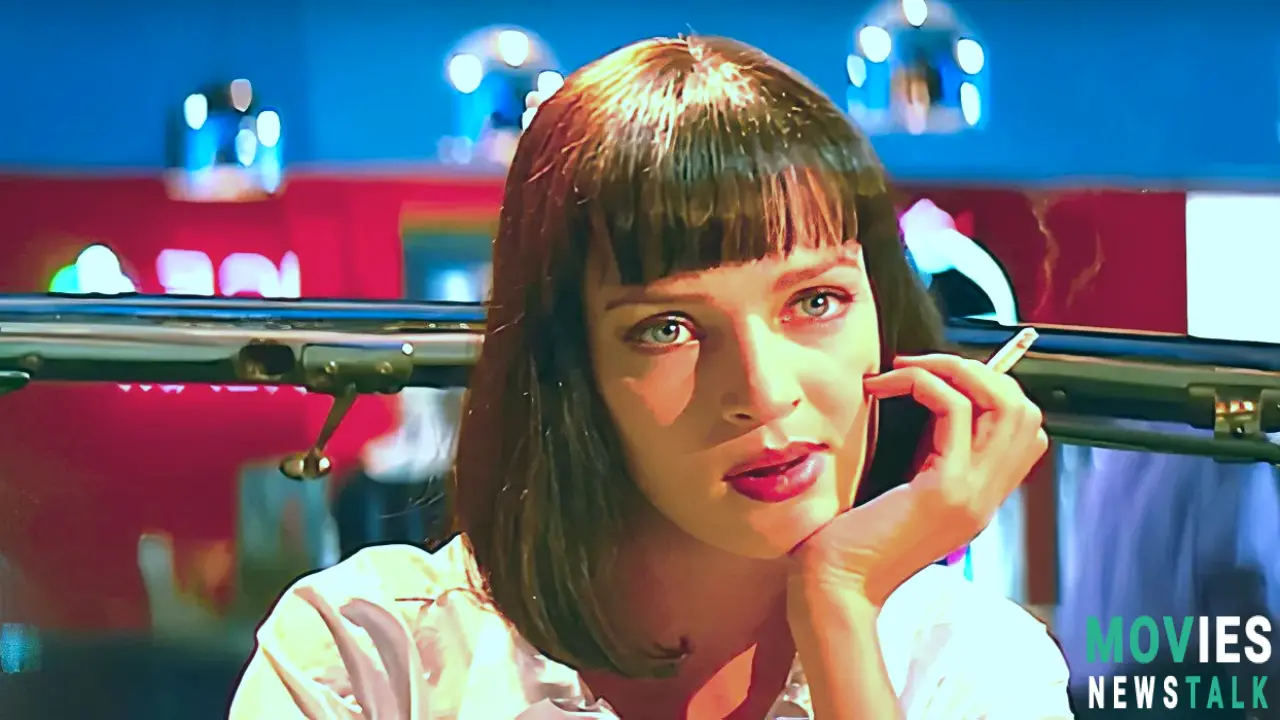John Travolta's Vincent Vega had the most screen time in Pulp Fiction.
In a more traditional film, Travolta's screen time would be limited for the protagonist.
An intrepid member of The Quentin Tarantino Archives sifted through Pulp Fiction to determine each lead actor's screen time, and the answers were unexpected. With 83 minutes onscreen, John Travolta's Vincent Vega receives the lion's share of Pulp Fiction's 154-minute runtime, which is a relatively little amount of screen time for an ostensible main character. In a more traditional film, Travolta's screen time would be limited for the protagonist. However, the screen veteran's part easily outlasts his nearest challenger, Jackson's Jules Winnfield, who gets 58 minutes of screen time. Mia, played by Uma Thurman, scored only 32. Bruce Willis' troubled fighter Butch gets 52 minutes of screen time, but his role in the film feels more meaningful because his plot crosses with Vincent and Jules'. Honey Bunny and Pumpkin, the stickup artists, each get 15 minutes, but Tarantino's own character, Jimmy, only gets 12. One of the film's most underexplored tales, the subplot involving Harvey Keitel's implacable Pulp Fiction fixer Winston Wolf, receives only 12 minutes of screen time. Even so, this is more than Butch's antagonist turned ally, Ving Rhames' Marsellus, and his love interest, Maria de Medeiros' Fabienne.
Thematically, Vincent is the main character in Pulp Fiction.
While Travolta's character receives the most screen time in the film, Vincent is also the primary character because his journey has an impact on the lives of Jules, Mia, Marsellus, and Butch. Vincent is arguably the glue that holds these people together, as he is friends and partners with Jules, works for Marsellus, narrowly avoids an affair with Mia and saves her life, and is murdered by Butch. Although the ending of Pulp Fiction focuses on Jules' point of view, Vincent is still there in the narrative. Arguably, Vincent's presence in the scene reduces tension by revealing the ending.
Because viewers are aware that Vincent would shortly be slain by Butch, they can conclude that Jules and Vincent survive their encounter with Pumpkin and Honey Bunny. This could have been prevented if Vincent had not been in the diner, but he had to be there. In thematic terms, Vincent's presence at critical periods in the lives of the other characters influences the decisions they make, which ultimately determine their lives. Vincent sees the gunshots miss Jules and witnesses his enlightenment, and he subsequently gives Mia the heroin she nearly overdoses on.
Why Bruce Willis' Butch Could Be Considered Pulp Fiction's Main Character.
The killing of Vincent in Pulp Fiction demonstrates that the film's focus has abruptly shifted from Travolta's character to Bruce Willis's antihero, and Butch goes on to have significant character growth as his plot progresses.
However, this does not account for Vincent's interactions with Marsellus and Butch. Both people play significant roles in Vincent's story, while Vincent's presence is merely a blip in Butch's subplot. As a result, Butch might be argued to be a viable substitute for Pulp Fiction's main character. The killing of Vincent in Pulp Fiction demonstrates that the film's focus has abruptly shifted from Travolta's character to Bruce Willis's antihero, and Butch goes on to have significant character growth as his plot progresses. Butch kills Vincent without hesitation before returning to the pawn store to save Marsellus. While Jules experiences a change of heart and develops a conscience throughout the course of Pulp Fiction, his journey is never given the same attention as Butch's fight. Similarly, despite dancing with death and dominating the film's cultural legacy, Mia does not alter as a result of her experiences. Butch, like Travolta's Vincent, begins the plot of Pulp Fiction as one type of person and transforms into another before the credits roll, allowing him and the hit guy to claim the title as the film's main characters.
Pulp Fiction: A Cultural Phenomenon.
While Pulp Fiction's format implies that there is no clear main character, ranking the characters by screen time allows viewers to determine who the true protagonist is. Director Quentin Tarantino's Reservoir Dogs may have established him in the indie film industry, but it was 1994's crime epic Pulp Fiction that cemented his reputation. Pulp Fiction's darkly humorous LA narrative demonstrated that Tarantino's distinct style had significant popular appeal, grossing more than $200 million on a budget of only $8 million. This was extremely good, given how hazardous Pulp Fiction's unusual non-chronological storytelling method was.
The tale of Pulp Fiction was told out of sequence, with the narrative flying between the lives of numerous Los Angeles underworld criminals over the course of a few frenetic days. The innovative structure of Pulp Fiction allows everyone, from Samuel L Jackson's legendary hitman Jules to Bruce Willis's taciturn boxer Butch, to have their day in the spotlight. Pulp Fiction is perhaps the least conventional of Quentin Tarantino's films in terms of sequential storytelling, with even ambitious later works such as Inglorious Basterds providing a more simple timeline. Despite this, the primary character of Pulp Fiction may still be identified.
Pulp Fiction: A Study of Storytelling
Pulp Fiction is a cinematic masterpiece that transformed narrative and impacted a whole generation of filmmakers. The film's distinctive structure, fascinating characters, and classic dialogue have helped it become a cultural phenomenon. Quentin Tarantino's creative approach to storytelling, incisive wit, and ability to create distinctive characters have made an indelible mark on the world of cinema.
Pulp Fiction is more than just a film; it is a cultural touchstone. It has influenced innumerable films, television series, and even music. The film's iconic characters, memorable phrases, and beautiful graphics have all become part of the fabric of popular culture. Pulp Fiction continues to inspire and enchant audiences, demonstrating its ongoing power and importance as a cornerstone of modern film.

